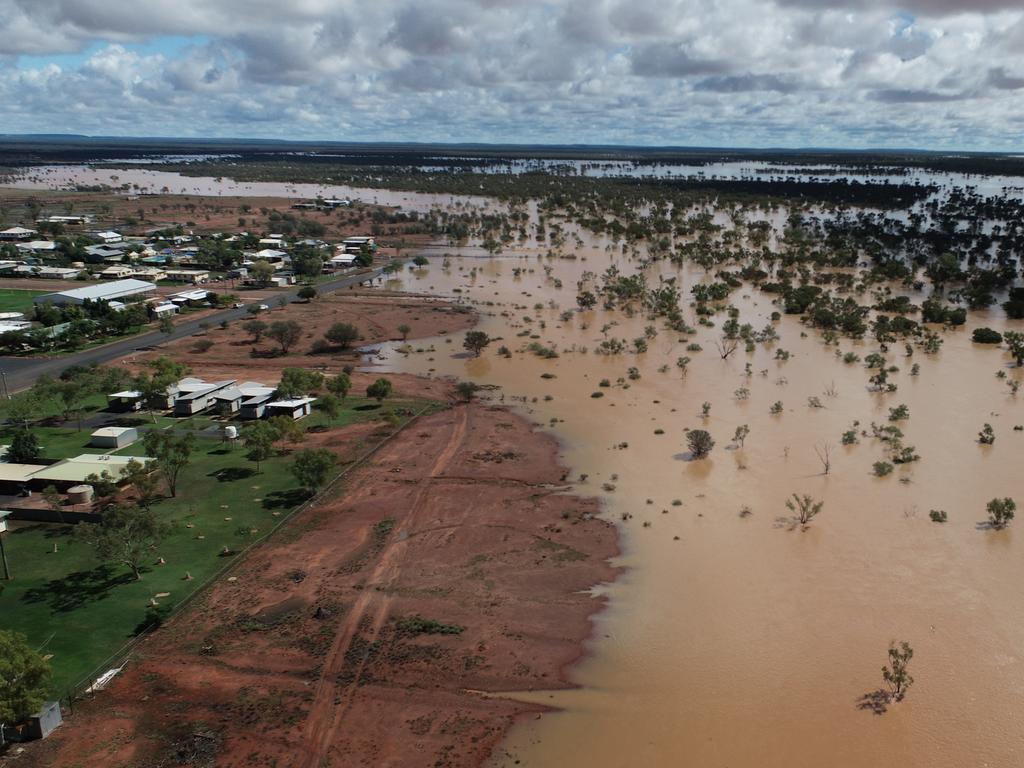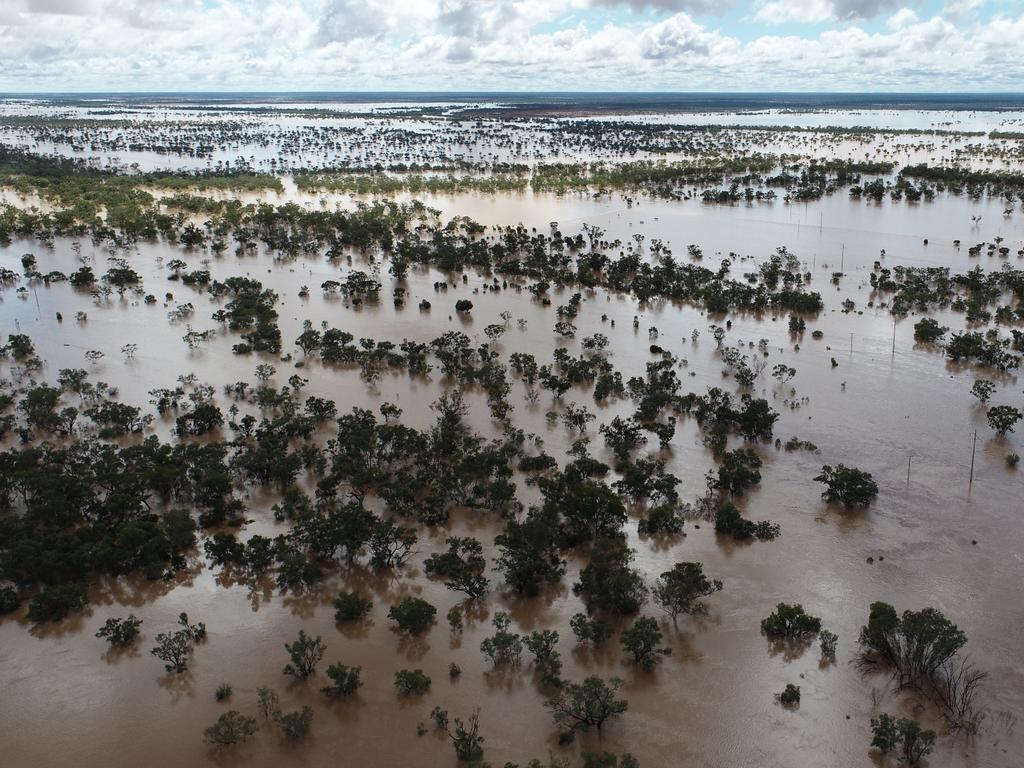‘Livelihoods just washed away’: Western Queensland hit by record-breaking flooding
A small Queensland town 1000 kilometres from the ocean has turned into an inland island as food and other products are being flown in and out.
News
Don't miss out on the headlines from News. Followed categories will be added to My News.
Living 1000km from the ocean, Craig Oates’ four-year-old daughter Amberley has never seen the beach, but the inland sea that has caused a widespread catastrophe across remote southwest Queensland is the closest thing to it.
Mr Oates, 29, grew up in Quilpie and said the year’s worth of rain in the past couple of days had resulted in record-breaking flooding like he had never seen.
“I’ve seen a few floods come through, but nothing like this,” he said.
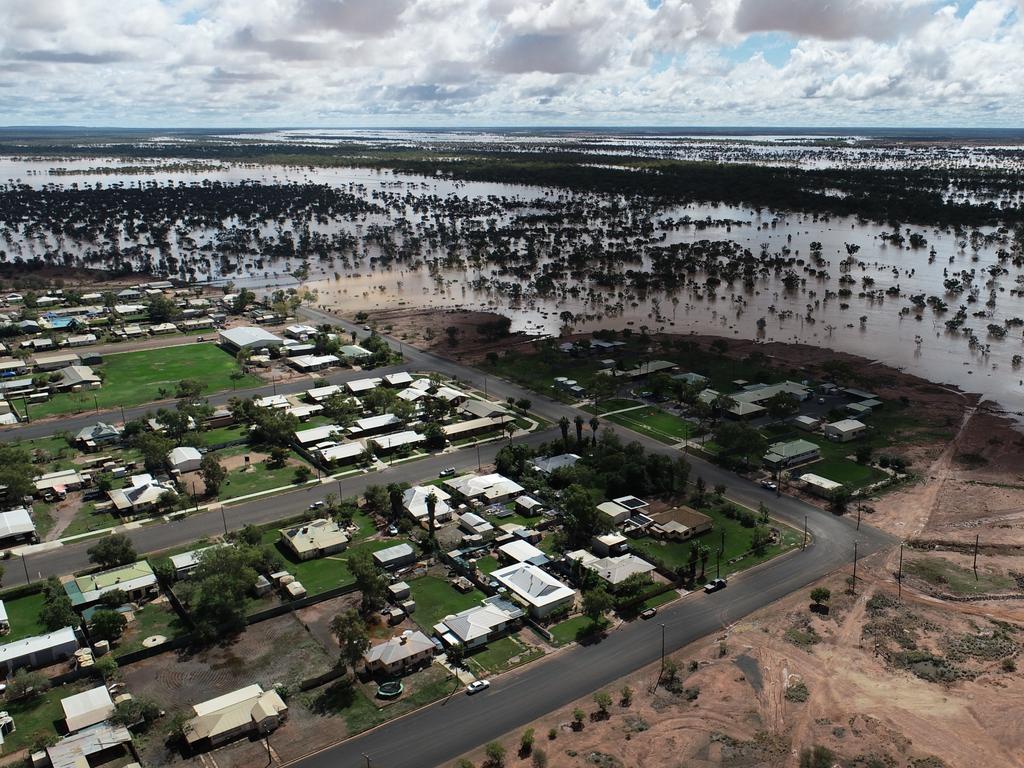
“People have lost a lot of things, houses and all their livelihoods just washed away.
“There are people out there who we probably won’t see for months because they can’t get out, they have to fly out.”
The scale of the flooding in a part of Queensland that was experiencing drought just a few weeks ago was difficult for Mr Oates’ two daughters to comprehend.
“They have never seen anything quite like this before,” he said.
“There are people still stuck out on their properties, and everything has got to get flown in on helicopters.”
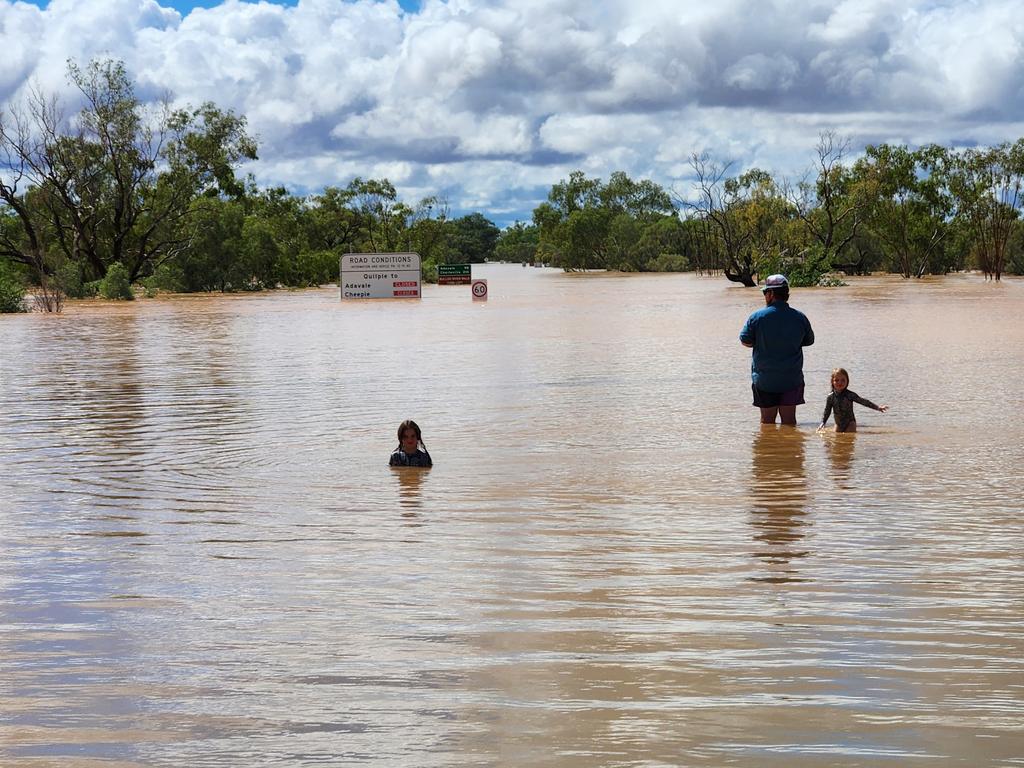
Mr Oates said his family was lucky to live on a hill in town and was not too severely impacted, but the lower level of their house got a little bit of water through, and like other Quilpie residents they had nowhere to go.
“We were very lucky compared to the surrounding areas,” he said.
“We’re on a little island for a little bit so we are flooded all around. You can’t get in or out unless you fly.”
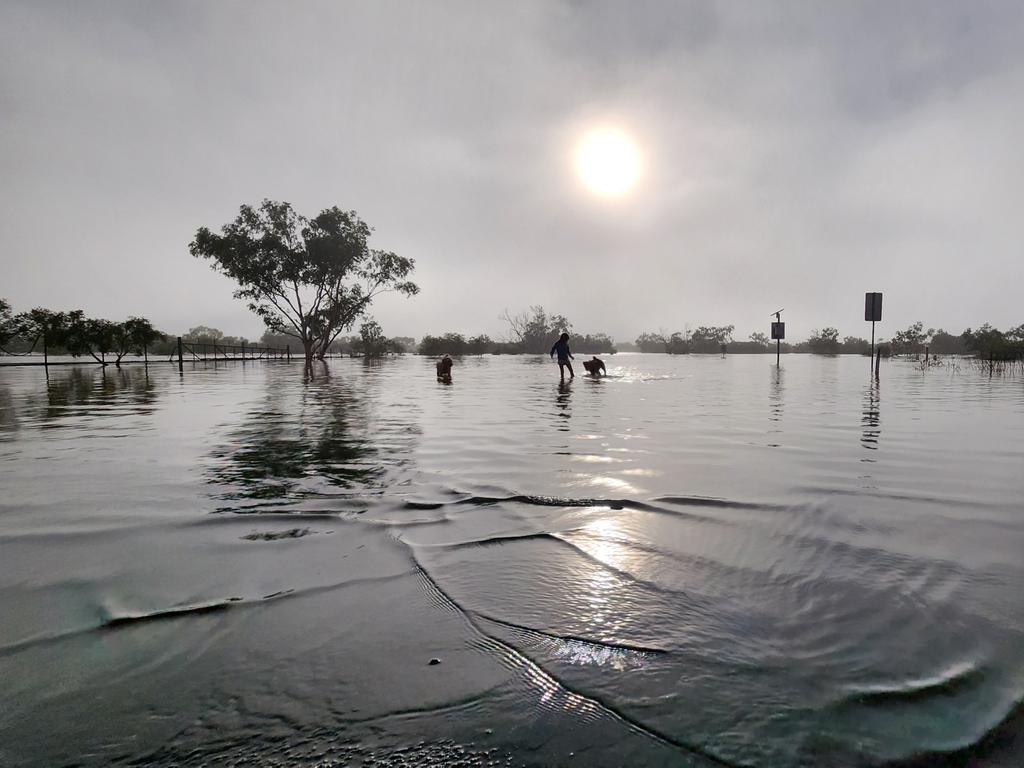
Planes have been flying from Charleville to Quilpie to restock shelves but, according to Mr Oates, planes couldn’t land for a few days because of the rain and Quilpie store shelves were bare.
“We ran completely out,” he said.
“The shops are running low again.”
Mr Oates’ wife Casey, who works at the Quilpie general store, has been boxing up food and other products to ship to isolated properties.
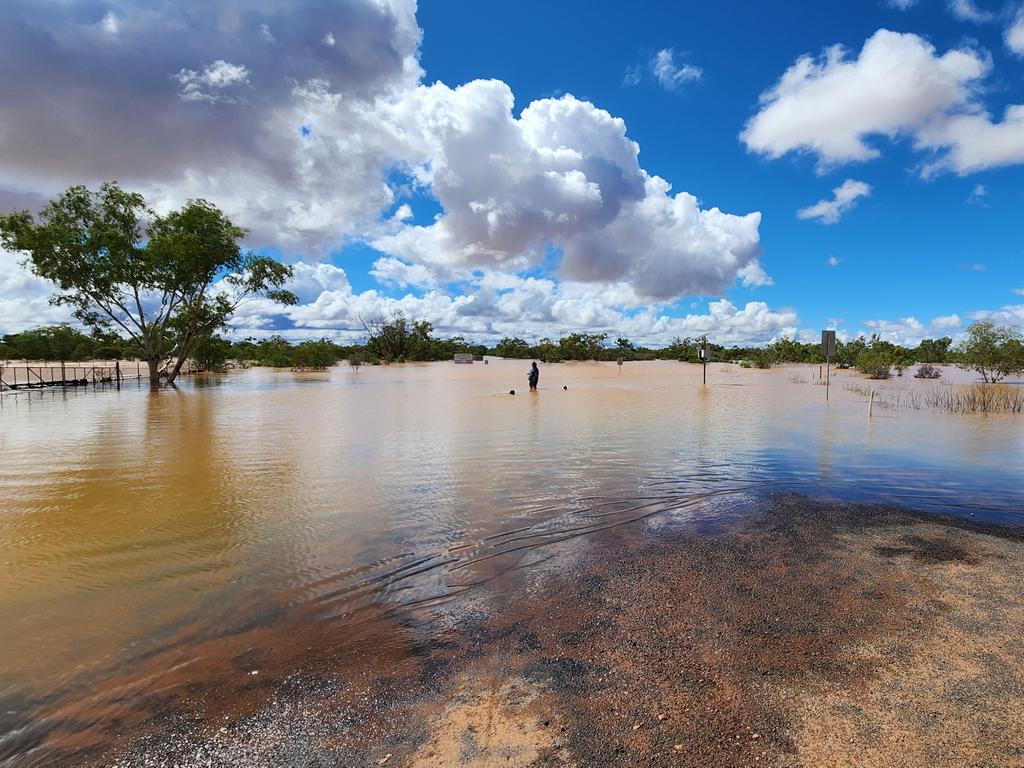
Meteorologist at the Bureau of Meteorology, Shane Kennedy, said the widespread flooding across western Queensland was causing prolonged community isolation and had a significant impact on agriculture.
Mr Kennedy said that although flooding in some regions had started to recede, Windorah, Thargomindah, and Eulo could expect flood levels to continue rising and were expected to reach their peak on Monday.
Cooper Creek at Windorah is predicted to reach nine metres on Monday, surpassing the 1974 and 1955 flood levels, while Thargomindah is expected to reach 6.6 metres on Sunday evening.
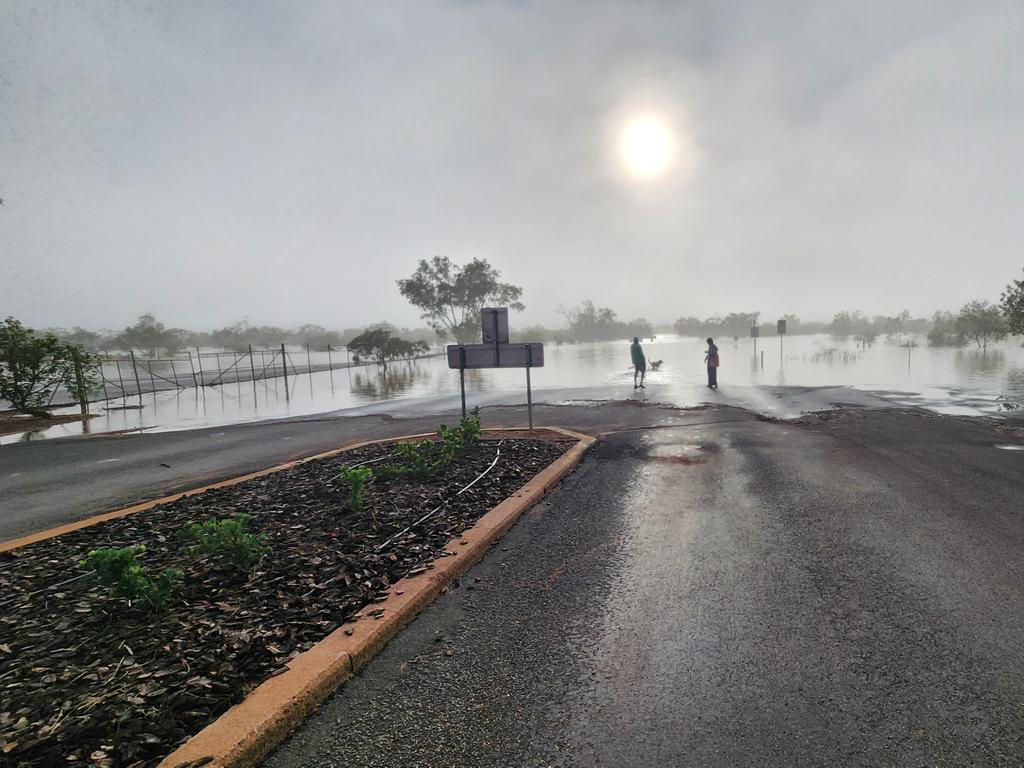
Jundah and Quilpie have both reached their peak and floodwaters are slowly starting to recede, but communities should stay on alert.
The Thompson River at Jundah reached its peak on Friday night, surpassing 1974 and 1955 flood levels and reaching nine metres.
There is currently still a flood watch for the Darling Downs, which is likely to be finalised today, according to the BOM.
“We may have a new flood watch issued on Monday or Tuesday, depending on the forecast of rain in the middle of the week,” Mr Kennedy said.
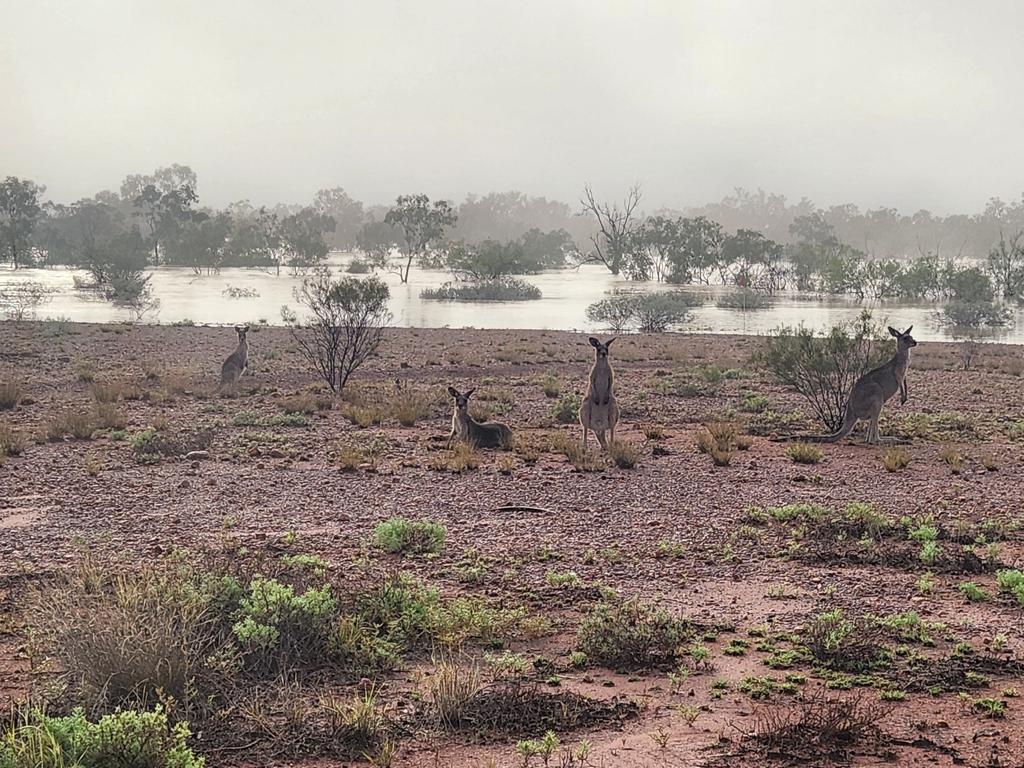
With rain expected to slow across Southern Queensland on Sunday night and Monday, there is a chance the rain could pick up again by Tuesday.
“I expect we’ll have rainfall increase in the southwest, in the southern interior, and might reach about as far east as Goondiwindi on Tuesday, and that’s just due to a new trough system that’s moving into the area,” Mr Kennedy said.
Although this rainfall is expected to be lower than what Queensland has seen in the past week, flooded catchments could still be impacted.
